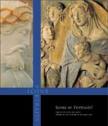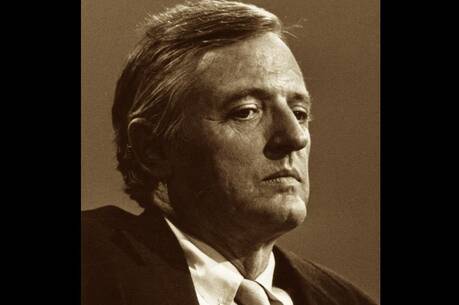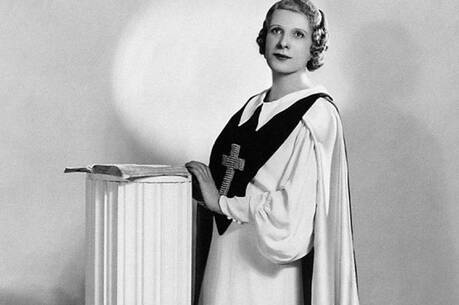Depicting Mother and Son
The exhibition “Icons or Portraits? Images of Jesus and Mary from the Collection of Michael Hall” recently closed at the Gallery of the American Bible Society in New York City. The exhibition was one of New York’s hidden treasures, and those fortunate enough to have seen it will have its beauty in their memories for some time. The exhibition featured 114 artworks of images of Jesus and Mary from the holdings of Michael Hall, a New Yorker who has been collecting such images for over 60 years. His collection afforded the American Bible Society Gallery’s director, Ena Heller, and her able colleagues the opportunity to put together an exhibition Mr. Hall had been hoping to do for years—one that explored the images of Jesus and Mary in art history. While the art on display spans eight centuries, most of the artifacts are from the European Renaissance and Baroque periods, and most of those are sculptural (from relief plaques and medals to small-scale, freestanding sculptures). It is clear that the collection was put together with a great deal of love and a discerning eye by Mr. Hall.
The exhibition asks viewers to consider how we have arrived at those images we understand to be depictions of Jesus and Mary, when there are no scriptural descriptions of either. The exhibition’s thesis is that the image of Jesus became more or less standardized by the 10th century, especially with the legend of the Mandylion of Edessa, the miraculous image of Jesus that was not painted by human hands. All subsequent images, be they done in the Greco-Roman tradition of the Italian Renaissance and Baroque or in the more gnarled styles of the late medieval European North are all recognizable “family resemblances.”
With the likeness of Mary, the exhibition organizers maintain, things are not so clear. The majority of the exhibition’s strongest images of Mary are also the most iconographically recognizable, be it the 16th-century icon of the Hodegetria (“she who shows the way”) or the more familiar Renaissance Madonna and Child depictions, complete with haloes. Other works, however, such as a beautiful Early Renaissance bust of a young girl without halo, may or may not be Mary. Clearly, the image of Mary was much more determined by the styles of the time and place in which the image was created than was the image of Jesus.
While the exhibition contains several works by such major Renaissance figures as Donatello and Verrochio, works by lesser known artists hold their own in terms of the excellence of their conception and execution. There are superb works by the 15th-century Florentine sculptor Desiderio da Settignano and his circle, and a remarkable relief bronze of the Adoration of the Magi done around 1800 by the British artist John Flaxman. This work, with its elegant economy of design, looks as though it could have been done by a gifted 20th-century artist.
For those not fortunate enough to visit the exhibition, the next best thing is the superb exhibition catalogue. This hardcover, large-format volume is one of the most handsome books of this kind to appear in recent years, with every object in the exhibition shown in full color, often at actual size or larger. Multiple views are provided of some of the sculptures. I had the opportunity to carry the catalogue with me through the exhibition to compare the photographs with the actual objects. The colors in the catalogue photographs are true to the colors of the original objects, and the photography is of such a high quality that it allows the viewer the luxury of examining, in great detail, each of the exhibition objects.
The catalogue follows the organization of the exhibition’s five sections: “Madonna and Child,” “Marian and Christological Narratives,” “Passion Narratives,” “The Body of Christ” and “Icons or Portraits?” There is some overlapping of subject matter (the “Passion Narratives” and “Body of Christ” sections both treat the Good Friday suffering of Jesus, with the latter section focusing exclusively on the Crucifixion). Each image is given its own page facing a page of commentary of approximately two paragraphs in length.
Icons or Portraits? will be of interest not only to laypeople but to art historians as well, as each of the entries is written at a high level of art historical scholarship (complete with footnotes and at times bibliographies) that is nonetheless accessible to general readers.
This is a sumptuous (and at $40, affordable) volume that would make an ideal gift for the holiday season.
Editor’s Note: The exhibition will travel to Mobile (Ala.) Museum of Art, Feb. 14-June 8, 2003; Evansville (Ind.) Museum of Arts and Sciences, July 28-Oct. 5; and Crocker Museum of Art in Sacramento, Calif., Nov. 17, 2003-Jan. 18, 2004.
This article also appeared in print, under the headline “Depicting Mother and Son,” in the December 23, 2002, issue.








